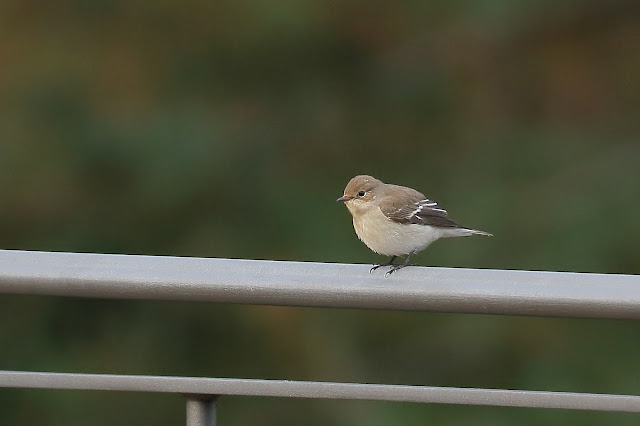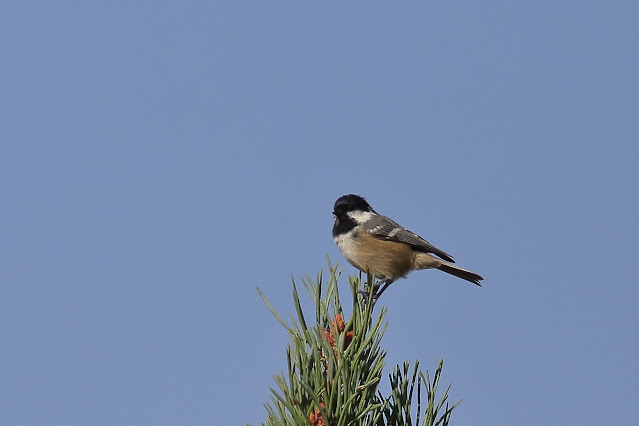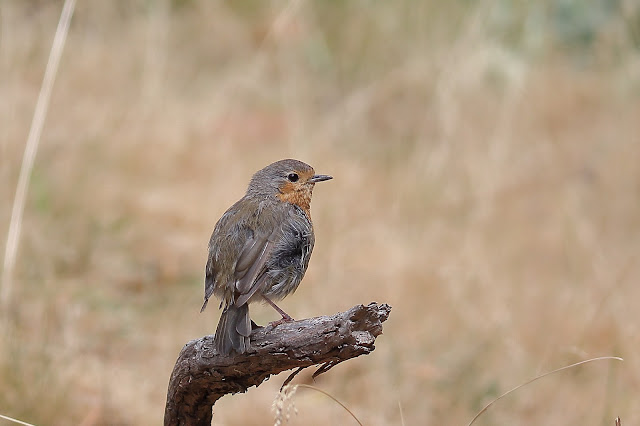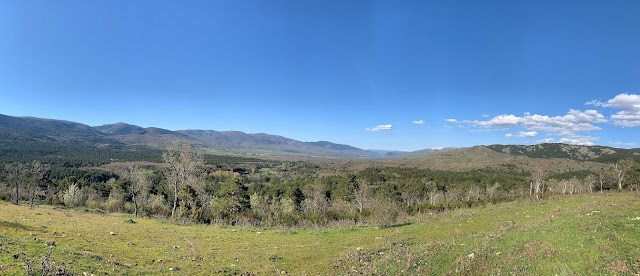Hola una vez más.
Hi again.
En el siguiente enlace podéis ver nuestros próximos viajes fotográficos y de observación de aves y mamíferos nacionales y al extranjero. Espero que os gusten y os animéis a venir conmigo. Una experiencia que nunca olvidareis.
In the following link you can see our next national and foreign Birds and Mammals photographic and observation trips. I hope you like them and I encourage you to come with me. An experience that you will not forget.
En esta ocasión os muestro lo que pudimos ver en dos días de excursión privada a principios del mes de septiembre. Aunque no es un buen mes para pajarear en la comunidad de Madrid, decidí visitar el P. N. Sierra de Guadarrama el primer día y el segundo la Sierra Oeste.
On this occasion I show you what we were able to spot in two days of private excursion at the beginning of September. Although it is not a good month to bird in the community of Madrid, I decided to visit the Sierra de Guadarrama National Park on the first day and Sierra Oeste on the second.
Primer día:
First day:
First day:
En nuestro primer punto de observación pudimos ver bastantes piquituertos comunes (Loxia
curvirostra). Algunos realmente cerca y con fotos bonitas.
At our first observation point we were able to see quite a few Common Crossbills. Some really close and with nice photos.
Se puede apreciar muy bien la curvatura cruzada de su pico. Es una pena que no tengan el plumaje bonito en esta época.
You can clearly see the crossed curvature of its beak. It's a shame they don't have pretty plumage at this time.
Un herrerillo capuchino (Lophophanes
cristatus) que no paraba ni un segundo para que le pudiésemos sacar una bonita foto.
A Crested Tit that didn't stop for a second so we could take a nice photo.
Papamoscas cerrojillo (Ficedula
hypoleuca) que son muy abundantes en la época de su migración a África.
Pied flycatchers which are very abundant at the time of their migration to Africa.
Carbonero garrapinos (Periparus
ater).
Coal Tit.
Como era de esperar vimos varios acentores comunes (Prunella
modularis).
As expected we saw several Dunnocks.
Al igual que buitres negros (Aegypius
monachus). Este entre la niebla.
Like Black Vultures. This one among fog.
Y este otro con el cielo despejado aunque pasó más lejos.
And this other one with a clear sky although it passed further away.
También vimos varios escribanos montesinos (Emberiza
cia).
We also saw several Rock Buntings.
Y varios juveniles de esta especie.
And several juveniles of this species.
Dos lejanos abejeros europeos (Pernis
apivorus).
Two distant European Honey Buzzard.
Al final de la mañana fuimos hasta el último punto donde podíamos encontrar verderones serranos (Serinus
citrinella). En el paseo en su busca pudimos ver a este petirrojo europeo (Erithacus
rubecula).
At the end of the morning we went to the last point where we could find Citril Finche. On the walk in search of them we were able to see this European Robin.
Un águila calzada (Aquila
pennata) morfo claro.
A pale morph Booted Eagle.
Y por fin pudimos localizar a un grupo de verderones serranos (Serinus
citrinella) aunque no pudimos sacar buenas fotos de ellos.
And finally we were able to locate a flock of Citril
Finch although we couldn't take good photos of them.
Iban mezclados con serines verdecillos (Serinus
serinus).
They went together with European
Serin.
Esta culebrera europea (Circaetus
gallicus) nos sobrevoló cuando íbamos a coger la furgoneta para ir a otro punto para almorzar.
This Short-toed
Eagle flew over us when we were going to take the van to go to another point for lunch.
Precioso ejemplar.
Beautiful specimen.
La vista del valle de Lozoya desde donde almorzamos. Precioso sitio.
Views of the Lozoya valley from where we had lunch. Beautiful place.
El final de la excursión fue en un lugar cercano al embalse de Santillana pues querían ver picos menor (Dryobates
minor). La suerte estuvo de nuestro lado y pudimos ver a este macho.
The end of the excursion was in a place near the Santillana reservoir because they wanted to see lLesser Spotted
Woodpecker Luck was on our side and we were able to see this male.
También vimos varios ejemplares de trepador azul (Sitta europaea). Dos de ellos muy mansos.
We also saw several specimens of European
Nuthatch. Two of them very tame.
Segundo día:
Second day:
Lo primero que pudimos ver nada más llegar al embalse de Picadas fue esta culebrera europea (Circaetus
gallicus). Antes, había hecho una parada para ver una pareja de águila imperial ibérica (Aquila
adalberti) que estaba posada en una torre del alta tensión. Al estar lejos no saqué ninguna foto de la pareja.
The first thing we could spot as soon as we arrived at the Picadas Reservoir was this Short-toed
Eagle. Before, I had made a stop to see a pair of Spanish
Imperial Eagle that were perched on a high voltage tower. Being far away I didn't take any photos of the pair.
Este helicóptero ultraligero paso varias veces por encima del embalse causando que las aves que estaban volando se espantasen.
This ultralight helicopter passed over the Reservoir several times disturbing the Birds that were flying.
Un rato después pudimos contemplar la primera águila real (Aquila
chrysaetos). Se trataba de un joven que no paraba de reclamar a uno de sus progenitores para que la alimentase.
A while later we were able to see the first Golden Eagle. It was a juvenile who was begging for food to one of its parents.
Entretanto vimos buitre negro (Aegypius
monachus).
Meanwhile we saw Black Vulture.
Y uno de los progenitores del águila real (Aquila
chrysaetos). Impresionante.
And one of the parents of the Golden Eagle. Awesome.
Y su hijo que le seguía para ver si recibía algo de comer.
And its son who followed it to see if it received anything to eat.
Más buitre negro (Aegypius
monachus).
More Black Vulture.
También vimos bastantes buitres leonados (Gyps
fulvus).
We also saw quite a few Griffon Vultures.
Y un abejero europeo (Pernis
apivorus).
And an European
Honey-buzzard.
Para terminar la jornada, nos despezamos hasta una zona esteparia para ver aves de este medio pero por la época en la que estábamos y las altas temperaturas solo pudimos ver a un grupo de avutardas euroasiáticas (Otis
tarda) que son las más voluminosas. Además las lluvias de principios de septiembre habían hecho que en la mayoría de los sembrados las plantas estaban muy altas y tupidas, lo que dificultaba más el poder encostrar aves esteparias.
To finish the day, we headed to a steppe area to see Birds of this environment, but due to the time of year and the high temperatures we were only able to spot a group of Great Bustards which are the largest. Furthermore, the rains at the beginning of September had meant that in most of the fields the plants were very tall and bushy, which made it more difficult to find steppe birds.
Si queréis suscribiros a este blog de los viajes que hacemos pincha en el siguiente enlace: Suscribirse y haz clic en ¿ Quieres suscribirte a nuestro blog?
If you want to subscribe to this post about the trips we do, click on the following link: Susbcribe and click on: Do you want to subscribe to our blog?
Espero que os haya gustado y hasta pronto.
I hope you like it and see you soon.






































No hay comentarios:
Publicar un comentario